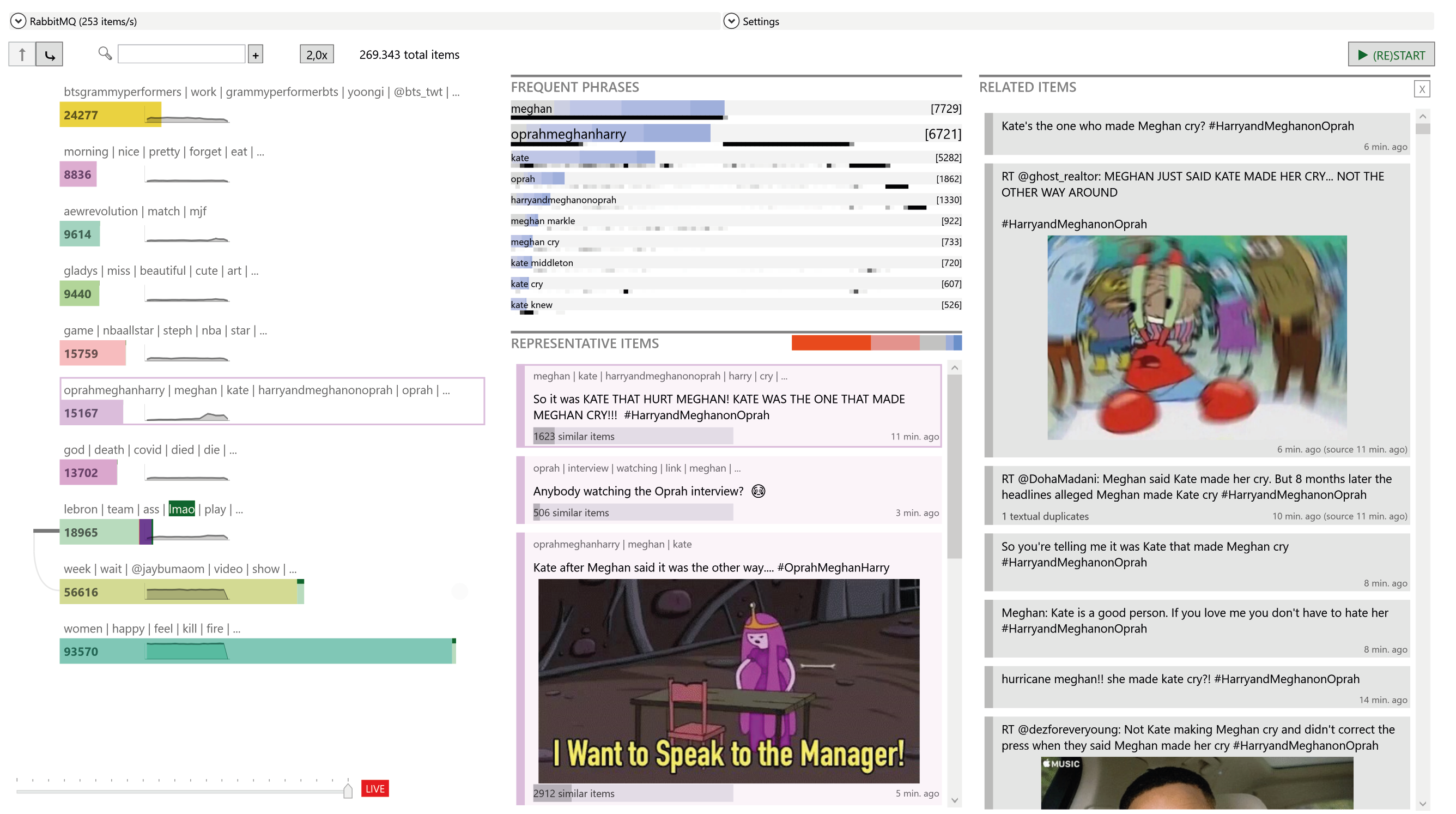Honorable Mention
Real-Time Visual Analysis of High-Volume Social Media Posts
Johannes Knittel, Steffen Koch, Tan Tang, Wei Chen, Yingcai Wu, Shixia Liu, Thomas Ertl
External link (DOI)
View presentation:2021-10-28T14:15:00ZGMT-0600Change your timezone on the schedule page
2021-10-28T14:15:00Z

Abstract
Breaking news and first-hand reports often trend on social media platforms before traditional news outlets cover them. The real-time analysis of posts on such platforms can reveal valuable and timely insights for journalists, politicians, business analysts, and first responders, but the high number and diversity of new posts pose a challenge. In this work, we present an interactive system that enables the visual analysis of streaming social media data on a large scale in real-time. We propose an efficient and explainable dynamic clustering algorithm that powers a continuously updated visualization of the current thematic landscape as well as detailed visual summaries of specific topics of interest. Our parallel clustering strategy provides an adaptive stream with a digestible but diverse selection of recent posts related to relevant topics. We also integrate familiar visual metaphors that are highly interlinked for enabling both explorative and more focused monitoring tasks. Analysts can gradually increase the resolution to dive deeper into particular topics. In contrast to previous work, our system also works with non-geolocated posts and avoids extensive preprocessing such as detecting events. We evaluated our dynamic clustering algorithm and discuss several use cases that show the utility of our system.